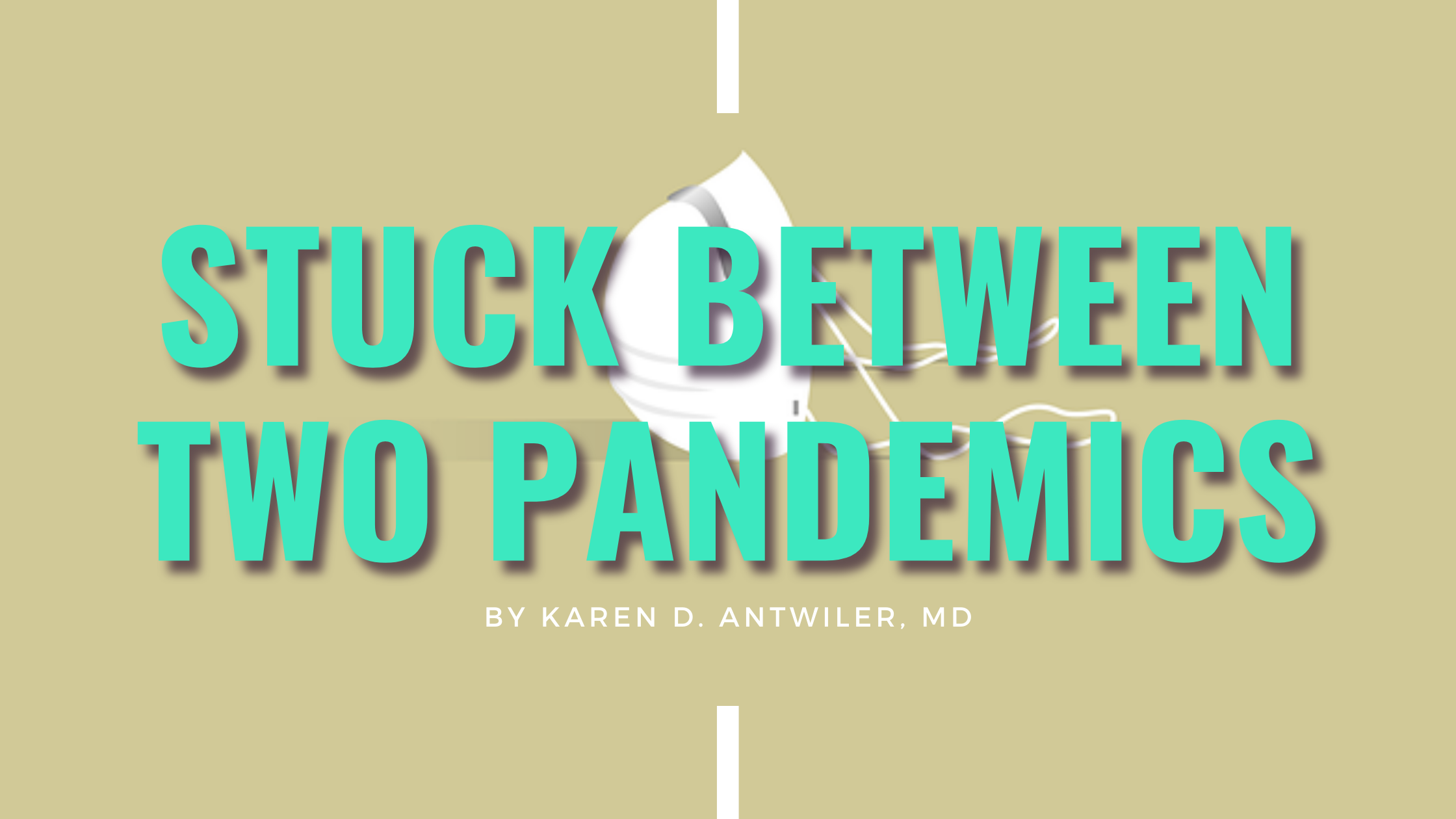
Blog post by Karen D. Antwiler, MD
I am a family medicine resident invested in improving patients’ mental health, particularly treating substance use disorder and other forms of addiction. I train in the Coachella Valley, where several areas in the high desert have recorded some of the highest rates of opioid overdose deaths in the entire county. The Coachella Valley also leads Riverside County with the highest numbers of new COVID-19 cases and hospitalized patients, a trend that caused new concerns for the Christmas and New Year holidays.
The intersection of the two greatest pandemics of our generation is creating an insurmountable impact, particularly affecting the marginalized community of individuals suffering from substance use disorder. Tackling these crises has become even more problematic because, as in a perfect storm, the elements of COVID-19 worsen the already complex clinical conditions of patients with substance use disorders. These patients often already suffer from depression and anxiety, and the social distance mandates only amplify these issues. Methadone and other medications required for treatment have been more difficult to obtain. Most services available for those struggling with addiction have been disrupted by COVID-19 as well. Patients are not able to attend their AA meetings and other counseling sessions in person.
To recover from these pandemics, the special need for this marginalized stratum of society must be addressed with the utmost care. Fortunately, US federal health authorities are taking important steps to decrease these barriers. Telemedicine has been broadly expanded across medical specialties. Providers are now allowed to prescribe Buprenorphine without evaluating patients in person, instead conducting visits by video chat or phone. Clinics can give 14-day or 28-day supplies to stable patients to adhere to social distancing for safety by avoiding waiting in line. Some hospitals have initiated “bridge clinics,” which are low-barrier and easy-access locations to continue outpatient care of recently hospitalized patients. These measures provide hope that more changes will take place to continue lowering barriers that stand in the way of delivering evidence-based addiction care during these unprecedented times. For example, it would be helpful to lower or temporarily suspend the X-waiver requirements to allow non-X waiver prescribers to prescribe Buprenorphine.
Looking on the bright side, the COVID-19 pandemic could be an opportunity for positive change. The federal government has made rapid changes in regulations and guidance during COVID-19 in response to help those suffering from substance use disorder and other addictions. It is vital for residents and providers to take advantage of the new regulations to promote recovery and prevent relapse.